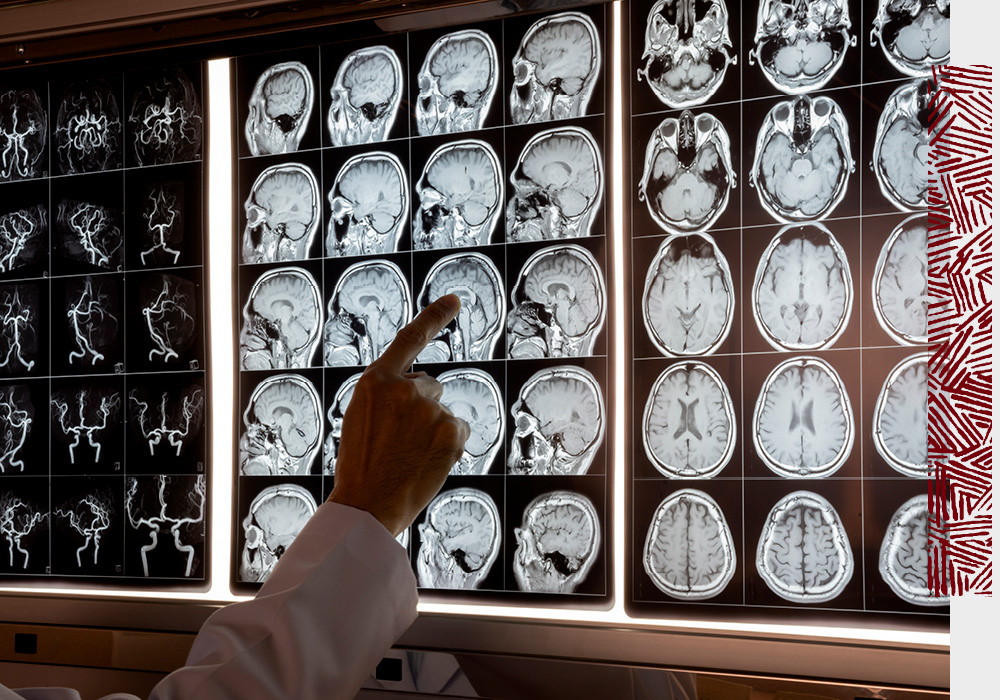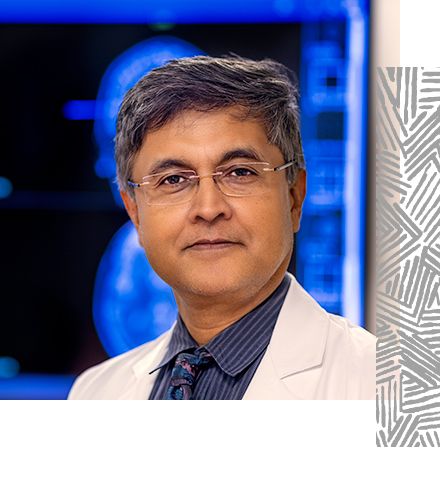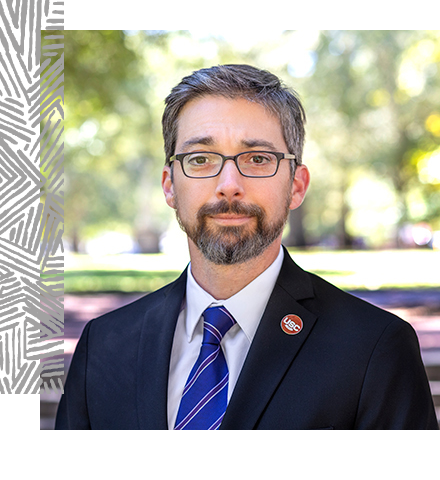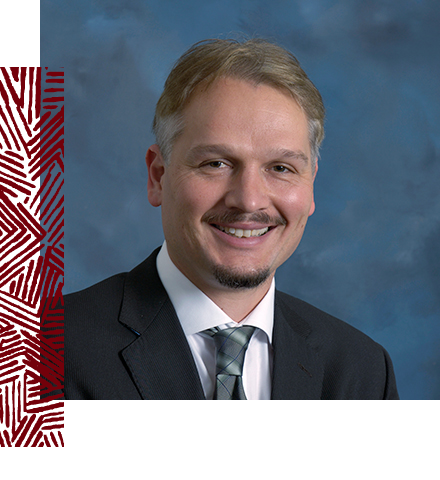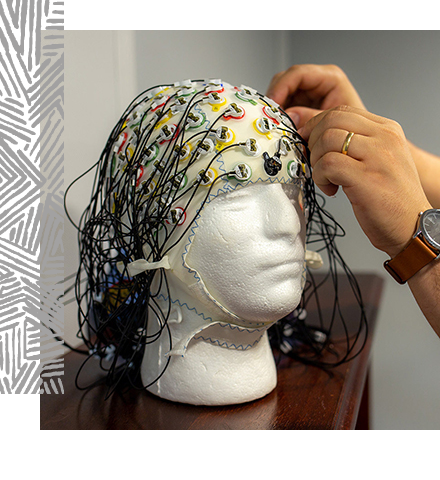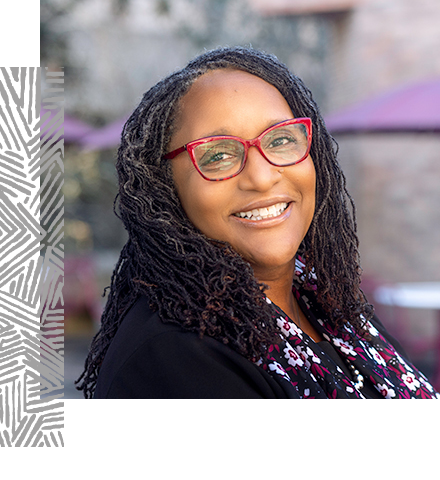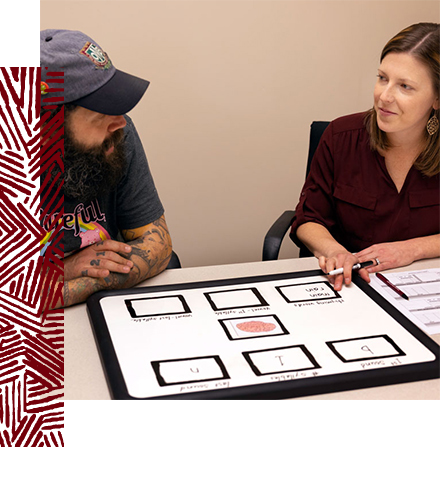First, the bad news: South Carolina residents suffer from high rates of stroke. In 2021, South Carolina had the seventh-highest incidence of stroke mortality in the United States, according to the CDC. In 2020, nearly 17,000 of our state’s residents were hospitalized for stroke at a cost of $1.3 billion, according to the S.C. Department of Health and Environmental Control.
Compounding the challenge is the fact that the state has comparatively few neurologists to treat patients.
But there is good news, too. As the state’s flagship institution, the University of South Carolina is well positioned to help. USC has many strengths in both research and treatment of stroke and aphasia (a common consequence of stroke characterized by difficulty speaking or understanding others’ speech), as well as in brain imaging and neuroscience more generally. Among the university’s key assets in these areas are:
- Aphasia Lab at the Arnold School of Public Health
- Center for the Study of Aphasia Recovery (C-STAR)
- Brain Health Network
- McCausland Center for Brain Imaging
- The Institute for Mind and Brain
- Carolina Autism and Neurodevelopment Research Center
Nearly a quarter of all stroke survivors are diagnosed with aphasia. At the Center for the Study of Aphasia Recovery, or C-STAR, a team led by USC researchers works to improve the effectiveness of aphasia treatment.
Individuals who have had a stroke can also develop vascular dementia, a condition in which a person experiences problems with reasoning, judgment, memory and other cognitive functions. To ensure that residents throughout the Palmetto State have access to world-class brain care, USC is establishing the Brain Health Network, a statewide network of rural clinics to provide diagnostic assessments and health care support for patients needing dementia and brain health care.
The work of USC faculty extends beyond labs and clinics, too. In the Aphasia Drama Club, Arnold School professor Dirk Den Ouden and Arts and Sciences professor Peter Duffy help patients work on their communication skills by producing a play together.
There is a lot of work to do to make South Carolinians healthier, and the University of South Carolina is committed to doing its part. Following are stories of how USC researchers are working to improve the lives of stroke patients.
After joining USC’s medical faculty in 2010, Souvik Sen launched a comprehensive stroke center in partnership with Prisma Health. Part of his work involves clinical research that leads to new protocols for stroke treatment across the state.
“Practically every year or two, stroke treatments are being modified, leading to better outcomes,” says Sen, chair of the neurology department at the School of Medicine Columbia. “And that’s why we have to be up to speed with our research here through clinical trials — that’s what builds the evidence for improved stroke care.”
Among the many stroke-related challenges in South Carolina is connecting patients with doctors. To address the need for neurology experts in rural areas, Sen and other neurologists have employed a model called teleproctoring in which practitioners see patients while consulting virtually with USC’s neurology clinicians, who provide expert counsel. Sen says the program is successful and could become a model for rural areas with poor access to medical care.
It takes a lot of work to improve stroke treatment, but seeing results makes it all worth it.
“As important as the research is, it is the patient care that personally motivates me,” Sen says. “It does require a lot of work from every member of our team because strokes happen 24/7. But seeing the impact of the treatment — it almost gives you goosebumps when you see someone come in paralyzed and then walk out of the hospital a day or two later, which at least a third of our stroke patients do.”
Dementia is a significant risk for those who have suffered a stroke. According to the Alzheimer’s Society, nearly 25 percent of people who have experienced a stroke will go on to develop stroke-related dementia. USC’s new Brain Health Network is part of the answer. The network will feature locations throughout South Carolina, with additional resources in Columbia to support diagnosis and treatment.
World-renowned neuroscientist and physician Dr. Leonardo Bonilha joined the USC School of Medicine in the fall and will serve as the Brain Health Network’s clinical director.
“Our goal is to support the primary care doctors on the front lines by giving them the resources they need to assess and manage patients with neurological issues, with specialized assessment in Columbia for the more difficult cases,” Bonilha says.
The Brain Health Network is acquiring high-tech tools to assist in the effort — including an ultra-high field 7 Tesla MRI scanner, the first of its kind in South Carolina.
“The goal of the Brain Health Network is to provide an infrastructure that leads to early detection and streamlined pathways to treatment,” says Julius Fridriksson, USC’s vice president for research.
In a state that struggles with multiple chronic diseases, it’s important to understand how one disease might impact another. Researchers at the University of South Carolina have found that people with diabetes have a harder time recovering from chronic post-stroke aphasia than those without diabetes.
In a small study group, patients with diabetes had brain lesions caused by stroke similar in size to participants without diabetes, and the severity of their aphasia was parallel. The key difference between the two groups was in their ability to recover, says Roger Newman-Norlund, managing director of the university’s McCausland Center for Brain Imaging and a co-author on a paper from the study.
One of the study’s key findings is that the structural network integrity of the brain is associated with whether and how much someone benefits from treatment following stroke.
“We already know that diabetes damages nerve fibers, including those in the brain, but this is the first time we’ve shown that this damage could affect your ability to recover from brain injury caused by stroke,” Newman-Norland says.
about Roger Newman-Norlund’s research
Nicholas Riccardi, a postdoctoral fellow in the Arnold School’s Department of Communication Sciences and Disorders, is working to understand how the brain functions by mapping it. His work focuses on the semantic system, or the part of the brain that deals with the meaning of words and concepts.
To map the brain, Riccardi launched a research project while working on his doctorate in psychology. The project involves having participants complete various tasks while scanning their brain activity. His aim is to map out the brain’s important language areas and to learn how they connect to each other and how other areas of cognition contribute.
Riccardi hopes that his research will one day fill in some of the gaps in understanding the brain.
“There’s a lot of research going into brain stimulation and how, in conjunction with speech-language therapy, it may one day be able to help people with aphasia recover language ability,” he says. “Every little bit matters in understanding the brain. What we’re learning now may lay the groundwork for therapies and treatments in the future.”
Gayenell Magwood, who joined the College of Nursing faculty in 2022, is working to raise awareness of cardiovascular disease and to address racial, ethnic and rural disparities in diagnosis and treatment through community-engaged health equity research. Magwood has a long relationship with the American Heart Association that helps inform her work.
“My first personal encounter with AHA was after a family member was diagnosed with a rare cardiac condition,” she says. “Professionally, I began with AHA as a basic life support instructor.”
The connection has carried through to her research. Through her involvement with the American Heart Association, Magwood collaborates with researchers and clinicians to discuss innovative research that informs prevention and treatment for heart disease and stroke.
“It’s important to raise awareness because most adults have at least one risk factor for heart disease,” Magwood says. “Raising awareness also provides opportunities for us to share heart-healthy information and resources.”
about Gayenell Magwood's research
The speech-language pathologist and the patient sit side by side at a table, looking at a flashcard. “What is this?” asks the pathologist as she points to the image on the card. The patient studies it intently, taking in the color, the shape. He closes his eyes. And then the word comes to him: “A brain.”
Aphasia is a language disorder that occurs after damage to certain areas of the brain. Most cases are the result of stroke, which is prevalent in South Carolina. Researchers at the University of South Carolina’s Center for the Study of Aphasia Recovery are working to better understand stroke recovery and improve the quality of life for people with aphasia. One of the ways they are doing this is through therapy.
“It’s really hard to measure quality of life, but we know that therapy works,” says Dirk den Ouden, an associate professor in the Arnold School of Public Health. “What we didn’t know is why it doesn’t work for everybody.”
To find out, researchers looked at the participants’ brain structure and brain functioning, and they conducted cognitive and language testing before treatment. They’ve found that age at stroke, lifestyle factors and brain age can affect recovery.
The second phase of the research project will examine how telehealth affects treatment
outcomes. If telerehabilitation is found to be comparable to in-person therapy, it
could open the door to more affordable treatments and make speech-language pathologist
more accessible for people in rural areas.
